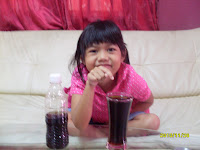0
Activity 2 : Measure and Compare Volumes of Liquid Using Standard Units for Low Achiever
Posted by Jasleen bt Mohamed Razali
on
7:38 AM
Class : Year 2 Jujur
Topic : Volume of Liquid
Learning Area : 6.2 Measuring and Comparing Liquid
6.2.2 Measure and Compare Volume of Liquid Using Standard Unit
Learning Outcome :
At the end of the leasson, pupils can measure liquid volume using standard units correctly.
Teaching Aids: Containers of various shapes and sizes, bottles, glasses, jug, mug, selinders, worksheets and measuring forms.
Learning Activities :
Set Induction: -
~ By using of concrete materials such as picture and water containers, the teacher asked students to name each containers and why there are in a different forms and shapes such as objects in the pictures.
~ Teacher and students discuss about the video.
~ Teacher shows and repeat all the steps from the video to the students by using the test tubes/silinder in front of the class.
~ Teacher explain about the correct way to read level of liquid at the level of meniscus.
~ In group of six, teacher ask pupils to measure the volume in millilitre/liter just like in the video and read aloud the measurements.
~ Teacher ask pupils to do the exercise in the worksheets.







































